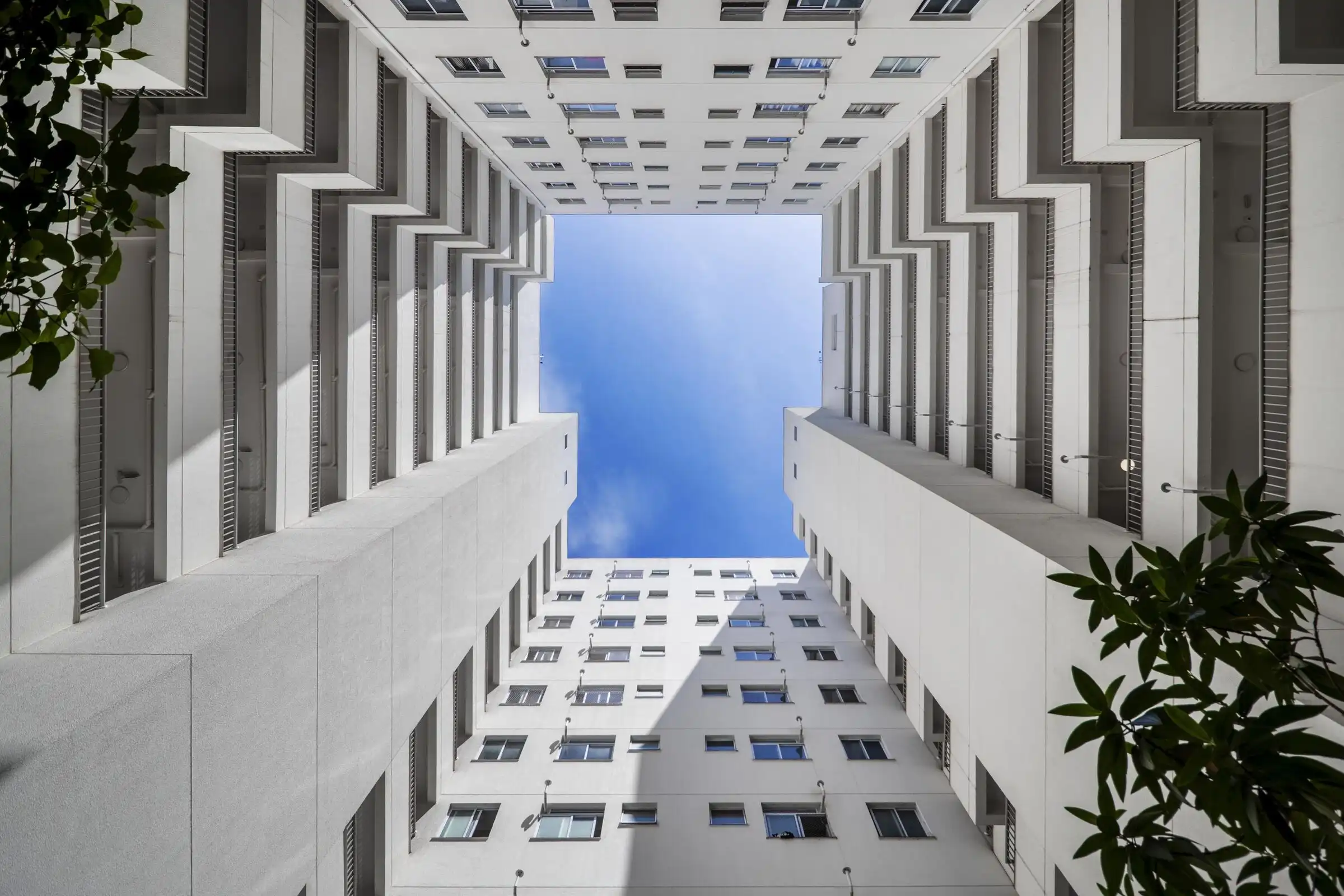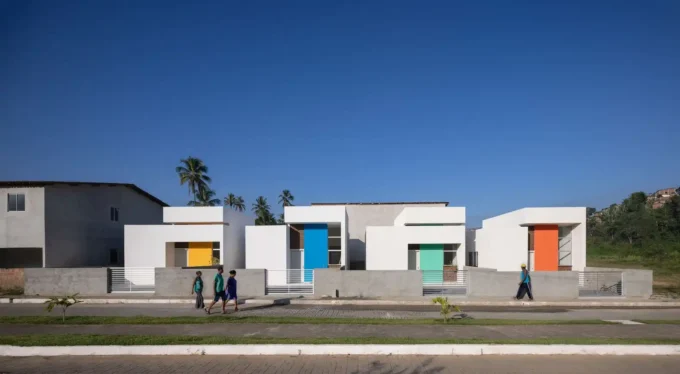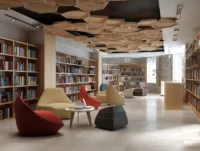In the heart of Barra Funda—a historic neighborhood in São Paulo’s western district—a bold urban transformation has emerged on the grounds of a former municipal asphalt plant. Decommissioned in 2019 after nearly 70 years of operation, the site has now been reimagined by Biselli Katchborian Arquitetos Associados into a dynamic social housing complex that not only provides essential residential infrastructure but also restores and enhances the surrounding urban fabric.
This ambitious project, part of São Paulo’s Public-Private Partnership (PPP) program for urban revitalization, replaces industrial decay with a renewed sense of place. Through an extensive process of environmental remediation and decontamination, the site has been cleaned and revitalized, making way for a sustainable, inclusive community.

A Site of Transformation and Reconnection
Located at the prominent junction of Avenida Dr. Abraão Ribeiro and Rua Norma Pieruccini Giannotti, the development positions itself strategically within the urban grid. The design reclaims and redefines this previously isolated lot by reinstating key urban elements—streets, corners, and communal spaces—that had been lost to industrial sprawl. The project introduces a vibrant mixed-use program, balancing the needs of residential life with economic activity.
At the heart of this urban intervention is a commercial tower, deliberately placed at the intersection to serve as an anchor. It integrates ground-floor retail spaces that engage directly with pedestrians and the neighborhood, while upper floors accommodate offices, contributing to a lively, multifunctional urban presence. A continuous canopy structure wraps around the ground level, creating shaded walkways that blur the boundary between public and private realms and encourage everyday interaction.

Housing with Dignity and Environmental Sensitivity
The residential portion of the development comprises four housing towers, collectively providing 417 social housing units. These towers are laid out with careful setbacks and massing strategies that prioritize cross ventilation, daylighting, and community engagement. This layout transforms the internal block into a shared courtyard, activated as a communal space that promotes neighborly connection and collective belonging.
The architects have prioritized functional, climate-responsive design throughout the housing units. Apartments are arranged along the perimeter of the towers, ensuring that every unit receives access to daylight and natural airflow. Central open-air atriums pierce each tower, creating vertical voids that allow breezes and sunlight to filter through shared corridors and communal circulation paths. These atriums become more than just spatial solutions—they cultivate visual transparency, environmental performance, and a subtle sense of connection among residents.

Architecture as Social Infrastructure
More than just providing shelter, this project treats architecture as a catalyst for social inclusion. The design deliberately resists monotony and uniformity by integrating spaces that foster interaction and human scale. The open ground level, shaded paths, and communal interior courtyard are all tailored to invite residents to participate in the shared life of the complex, countering the anonymity often associated with large-scale housing developments.
Beyond the built form, the project addresses the broader issue of urban regeneration. By transforming a formerly contaminated industrial site into a livable, healthy, and sustainable environment, the architects have restored not only the land but also its potential to serve the city. The project reconnects the neighborhood to the rest of São Paulo, physically and socially, providing affordable homes while simultaneously enriching the city’s architectural and urban discourse.
A Model for Equitable Urban Renewal
The social housing development in Barra Funda stands as a compelling example of how progressive urban design and public-private collaboration can reshape neglected spaces into vital urban centers. It demonstrates that even deeply scarred landscapes—like a former asphalt plant—can become the foundation for resilient, inclusive, and community-oriented places.
Through a nuanced architectural response, Biselli Katchborian Arquitetos Associados has not only provided essential housing but has also woven a new layer of life into the fabric of Barra Funda. The project offers a model for future urban renewal efforts, where environmental remediation, architectural clarity, and social commitment converge to create enduring value for both residents and the city at large.
Photography: Studio Gui Uemura
- adaptive reuse architecture
- Affordable housing Brazil
- Architecture as social infrastructure
- Barra Funda social housing
- Biselli Katchborian Arquitetos
- Brazilian contemporary housing
- Climate-responsive housing design
- Community-oriented architecture
- Daylight and cross ventilation design
- Housing with communal courtyards
- inclusive urban planning
- Industrial site transformation
- Mixed-use housing design
- Public-Private Partnership architecture
- São Paulo urban renewal
- Social Housing Redevelopment
- Sustainable housing development
- Urban design for social inclusion
- Urban regeneration project
- Vertical housing with atrium






































Leave a comment